Inside Victoria station is a map of the railways of south London, showing a station that no longer exists. Spencer Road Halt was only a small station, barely a station, and lasted less than a decade, but it still exists if you know where to look.
The station was part of the Woodside and South Croydon Joint Railway, which opened in August 1885 and ran between Woodside in the north to Selsden Road in the south, but Spencer Halt came later.
It was a failure, and even by the standards of the time where rail failures were not uncommon, it stank as a railway.
Within a decade, the owners were already thinking of closing the line, but in 1906, they replaced the steam trains with Kitson Railmotors, which were much cheaper to operate. The steam-powered railmotor was a single carriage unit with a small engine at one end. There was a smoking compartment at one end for passengers, and it was unusually egalitarian for the time, as there was just one class for seating. The maroon-coloured railmotor cost 2½p per trip.
When they introduced the railmotor, they also opened a small station — a halt — at Spencer Road. Much like the rest of the railway, it wasn’t a success either, and having opened in 1906, it closed less than a decade later in 1915.
The location is possibly a clue as to its failure.
Only a little bit further to the north was Coombe Lane station, and there was a main road just to the south, on Croham Road, but for some reason, they chose a very well hidden location behind houses on a side street for Spencer Halt, not the main road.
Due to the lack of passengers, the station closed in 1915, although the rest of the railway limped on, closing during WWI, not reopened until 1935, and closed again during WWII. Nearly falling to Beeching’s axe, it finally closed in 1983, by which time it was said to be carrying just 200 passengers a day.
Although Spencer Road Halt closed over a century ago and the station’s remains removed in 1935, you can still see echoes of the station hidden behind the houses that once concealed it from passengers.
Ideally, head to the road it was named after, Spencer Road, which is a short walk from South Croydon station, and as you head up, you’ll spy an unnamed alleyway.
Head down here, and at the back of the houses, where trees and bushes rule, you’ll suddenly come across a full size railway bridge. In the gap between the backs of people’s gardens, where if you didn’t realise it, there really shouldn’t be a railway bridge at all.
But look around, and you can see the remains of the closed railway in the undergrowth — which is easier to do in winter months — and as you head over the bridge, notice that it still has official railway bridge marker numbers.
This may be a disused railway and a ghost of a station, but rules are rules, so they keep the railway officialdom intact.
Look around the bottom of the footbridge. You’ll see some large concrete blocks — these are leftovers from WWII defences, which were put up around many railway sites to be used to prevent the enemy from advancing by rail had they invaded the UK.
As you stand here, wait a while, and you can hear the sound of a train rumbling past – not the ghost of a railway long closed, but trains passing through South Croydon station. But it’s evocative to stand in this hidden space and still hear echoes of the railway when it was alive.
After the railway closed, it was left dormant, but in 2000, about half the railway track was reused between Woodside and Lloyd Park station for the Croydon tramlink. It was a failure as a railway, but is huge success as a tram.
There are two vintage maps at London Victoria, both next to the M&S, and you want the one closest to the bus stop.

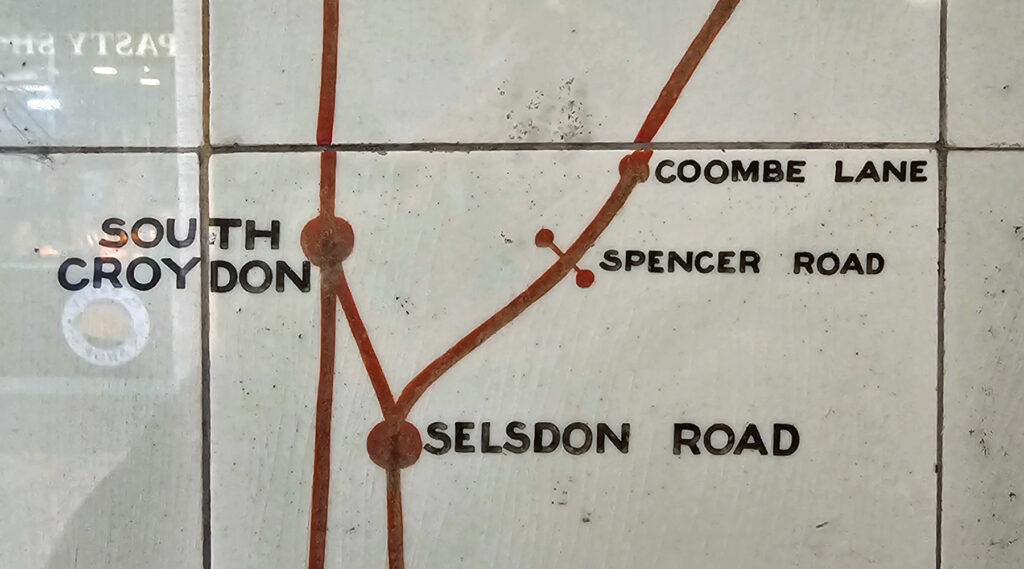
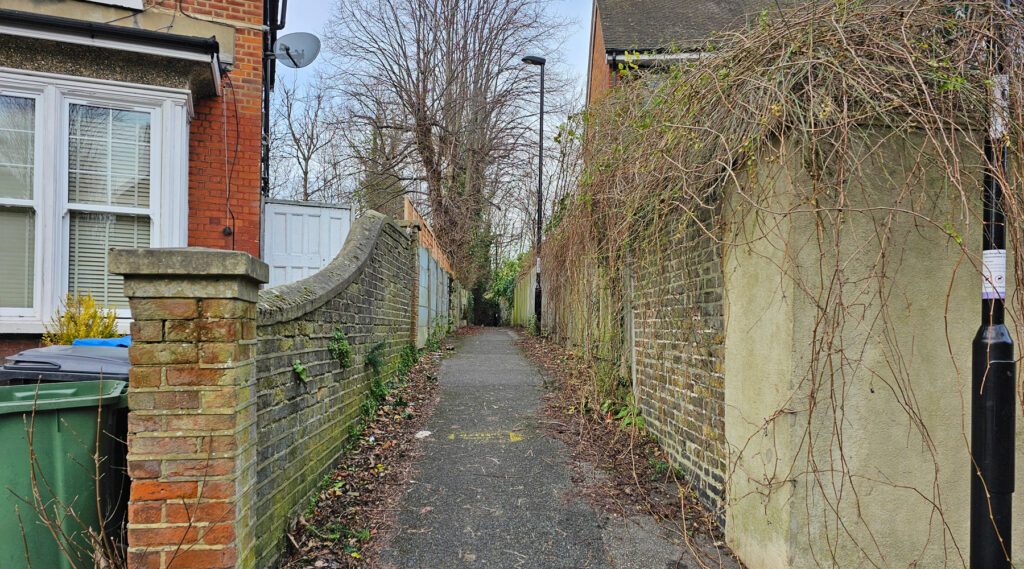

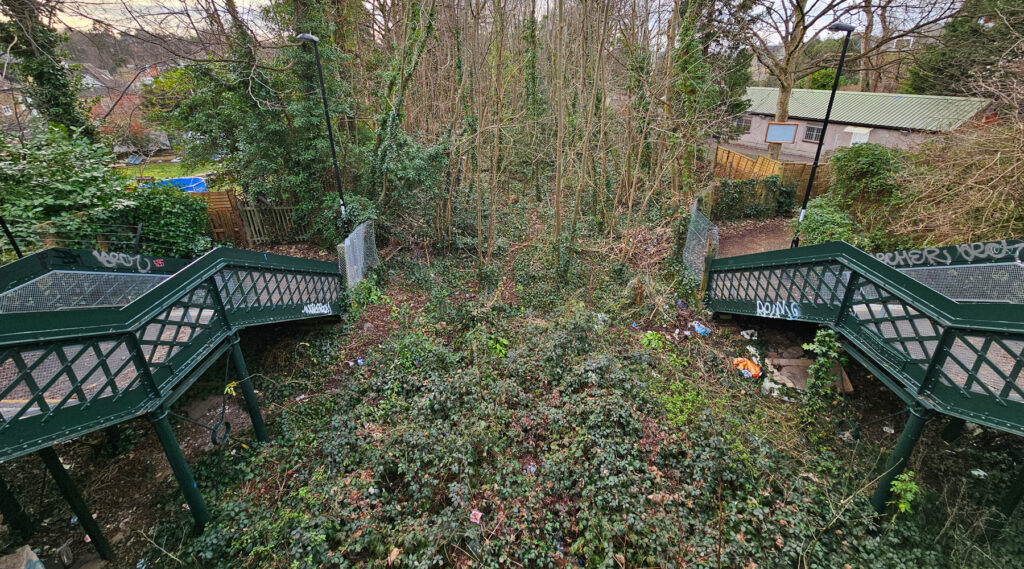
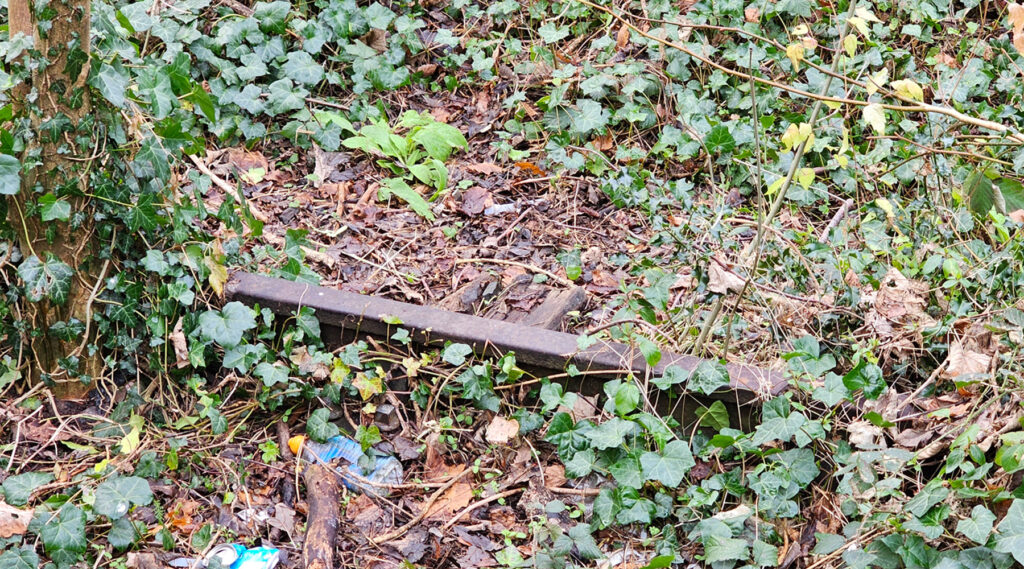
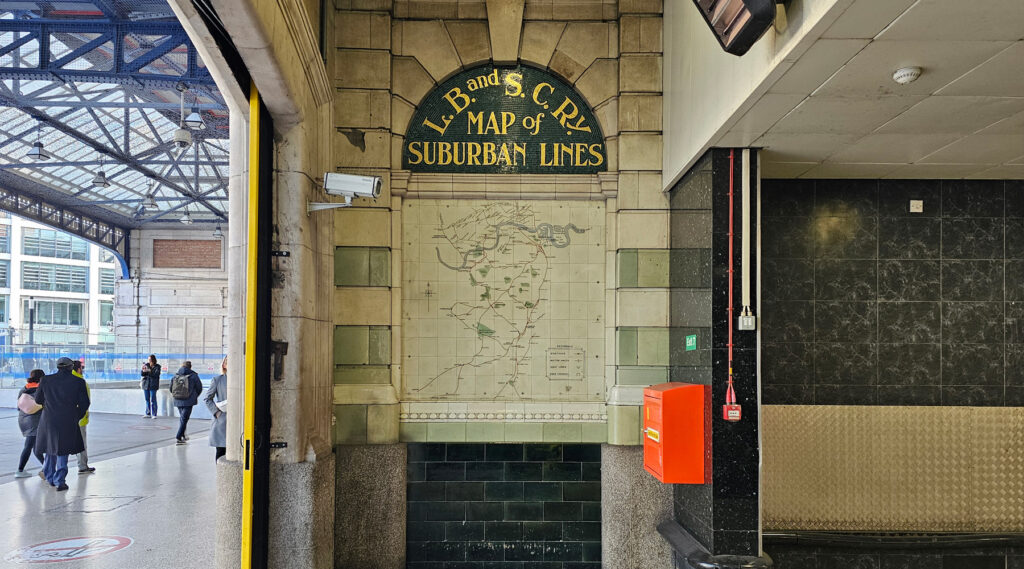






Aha! I found that bridge over 20 years ago but had no idea there had been a halt there. Interesting to find actual bits of industrial dereliction in London these days.
Minor correction/typo …
Surely “2 1/2d” per trip { 2.5p = 6d, yes? }
Thanks ever so much for this! Something to visit during the summer. Those maps at Victoria are fascinating – I trust they are Listed (the map version thereof!)
Regarding the concrete anti-tank blocks – there are many.
In 1940 General Ironside set up an outer London defence ring and the railway line here was part of that ring with the expectation that the Germans would be advancing from the East.
There is a pillbox built into the footbridge supports a bit south further to the south between Dornton Road and Whitmead Close.
Also, there is a concrete ‘roadblock’ in good condition forming part of the walls to the footpath between Spencer Rd and Birdhurst Rise (that runs past the Sports Cetner) a bit to the North. It consists of an angular concrete barrier on either side and would have had slots in the sides to fit an RSJ or piece of steel rail to block the path. The slots have been filled in on the faces but if you look from the top you can see a recess.
A couple of references:
https://en.wikipedia.org/wiki/Outer_London_Defence_Ring
and a similar structure:
https://en.wikipedia.org/wiki/File:Railway_block_on_Taunton_Stop_Line.JPG
The 7th/12th Croydon Scout Group occupies the small area of land near where the station platform was on the up-side. You can see our building in one of the photos. Our Scout teams are known as The Trainspotters when entering District, County and National competitions.
The bridge appears to be maintained to a higher standard than many of those found on operational railways…